A Day in Jaipur: A city of splendid forts, mahals and people
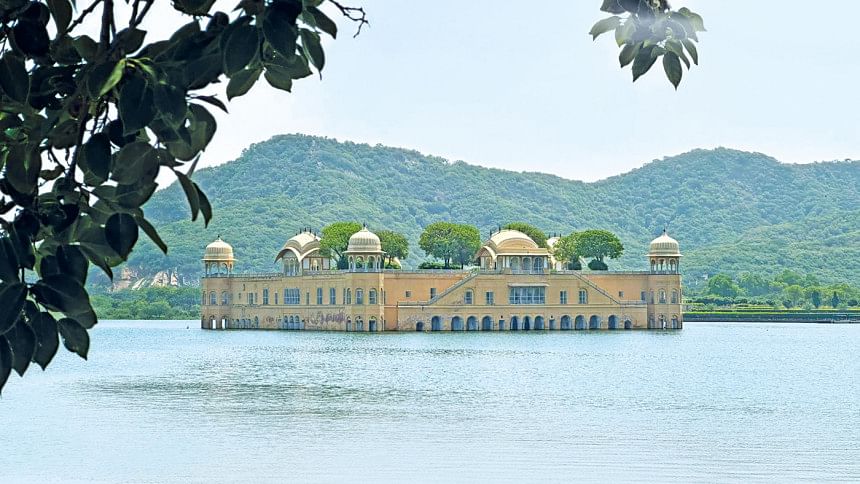
Since childhood, my imagination of Rajasthan was shaped by Satyajit Ray's classic detective film Sonar Kella -- a thrilling tale that masterfully captured the beauty, tradition, and history of this land of kings and forts. I have always been fascinated by the cultural richness and artistic traditions of Rajasthan. When I got to visit Jaipur during a tight-scheduled personal trip to India in September 2023, I took it, even though I wasn't sure how much I could truly explore.
We, my wife and I arrived in Jaipur at midnight, worn out from the long journey from Delhi. The hotel manager must have noticed something in us as he seemed unsure whether to ask for our passports or point us toward the restaurant. After brief formalities, we wasted no time locating the restaurant and ordered the famous Rajasthani thali without a second thought. A 'thali' is a grand platter, an assortment of various single dishes, all served in small bowls. The Rajasthani Thali, in particular, is a feast -- a balance of flavours ranging from sweet to spicy, believed to promote holistic health. The pungent aroma of the spices hit us as the food was served. Each dish had its distinctive blend of ingredients, offering a meal that was far from ordinary. After dinner, we fell into bed, exhausted, but eager to start early the next day.
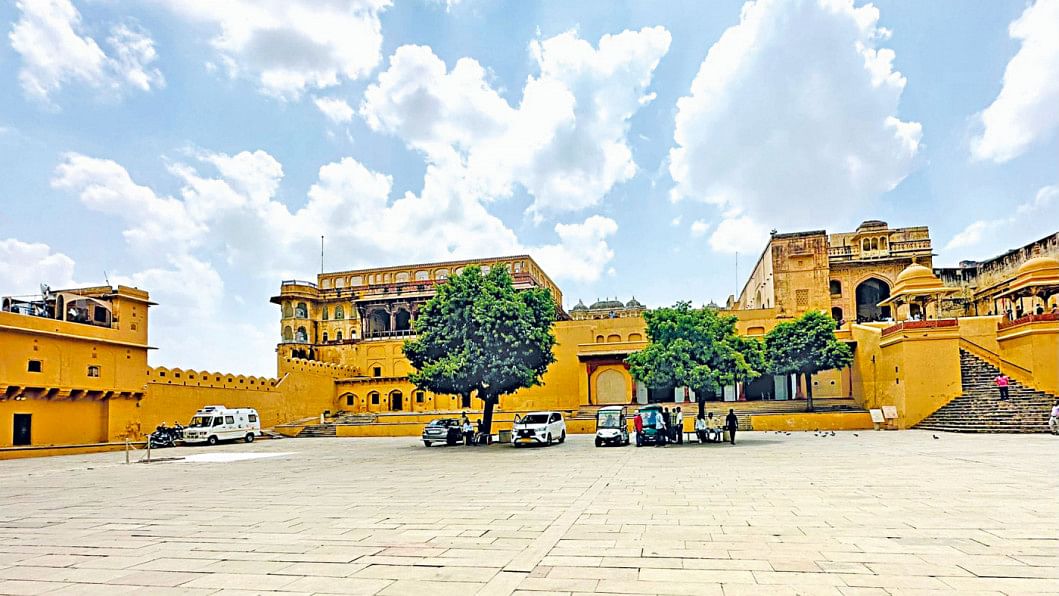
The next morning, our driver, Bandia, who wasn't a local but had visited Rajasthan often enough to know it intimately, called us early to get ready. We grabbed a quick breakfast -- bajra roti, a vegetable mix, and lahsun chutney -- knowing that the day would be packed with sightseeing. Rajasthani cuisine, I discovered, makes brilliant use of the limited vegetables grown in the region. Beans and local ghee add a unique colour and flavour to the dishes, giving them a distinctive taste.
Our itinerary was ambitious, and we had to be mindful of how much time we could spend at each location. I like "slow travel" when I feel a connection to a place, but with limited time, we had to balance exploration with efficiency. Our first destination was the iconic Hawa Mahal or Palace of Winds. Located in the heart of Jaipur, this five-story palace was built in 1799 by Maharaja Sawai Pratap Singh. Its honeycomb design, featuring 953 small windows with intricate latticework, allowed royal women to observe street processions while remaining unseen. The architecture was ingenious, allowing cool air to circulate and keeping the interior pleasant even during Rajasthan's scorching summers. Inside, a group of musicians played traditional folk songs, creating a magical atmosphere that matched the palace's colourful stained glass windows, which cast vibrant hues across the room.
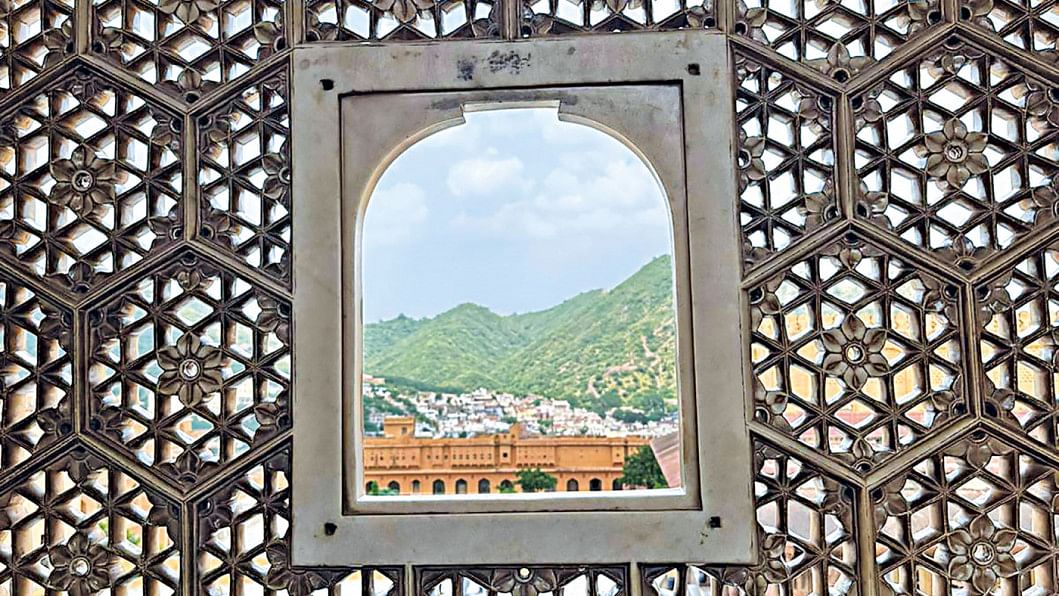
We skipped the nearby market, known for its traditional goodies, deciding to return later in the day, and set off for our next destination. After a short drive, we arrived at Jal Mahal, a palace that appears to float on the surface of the serene Man Sagar Lake. Built as a hunting lodge for the Maharajas, only the top story of the palace is visible above water, with the remaining four submerged. Although morning wasn't the ideal time of day to visit, we managed to capture some memorable photos, dressed in traditional Rajasthani attire, including the colorful pagari (turban). The turban, once a functional piece of clothing to keep cool in the desert heat, has now become a symbol of status in Rajasthan. We bought a few to take home, as a reminder of the journey.
Our next stop was the famed Amber Fort, about thirty minutes away, along a scenic drive through the Aravalli hills. These hills are dotted with forts and palaces, revealing how the ancient rulers protected their lands from potential invaders. The fort itself rises majestically from the bank of Maota Lake. Visitors can either walk up the winding path to the fort or take a short drive. We chose to walk, soaking in the view as we climbed the steps. The first thing that struck me upon reaching the fort was its vast courtyard, Jaleb Chowk, where I was immediately enchanted by its size and grandeur.
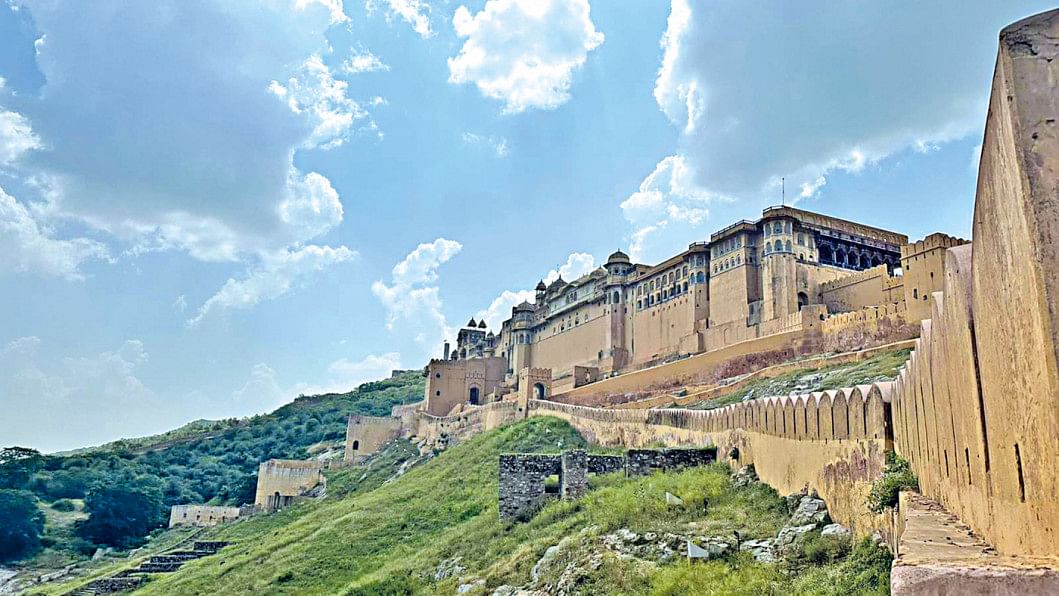
The Sheesh Mahal (Mirror Palace) is the crown jewel of Amber Fort. Built in the 16th century by Maharaja Man Singh, the palace is adorned with precious stones and mirrors. When someone illuminates a single candle inside it, the light, reflected on thousands of glasses creates the vibe of thousands of twinkling stars. Sitting inside Sheesh Mahal, admiring the intricate craftsmanship, was a moment of pure wonder. Opposite the Sheesh Mahal lies the Diwan-i-Am (Hall of Public Audience), with its double row of columns topped with elephant-shaped canopies. As we climbed higher into the fort, we reached Ganesh Pol, the gate decorated with frescoes leading to the maharaja's apartments. From the fort's ramparts, we enjoyed a breathtaking view of Maota Lake and the surrounding hills.
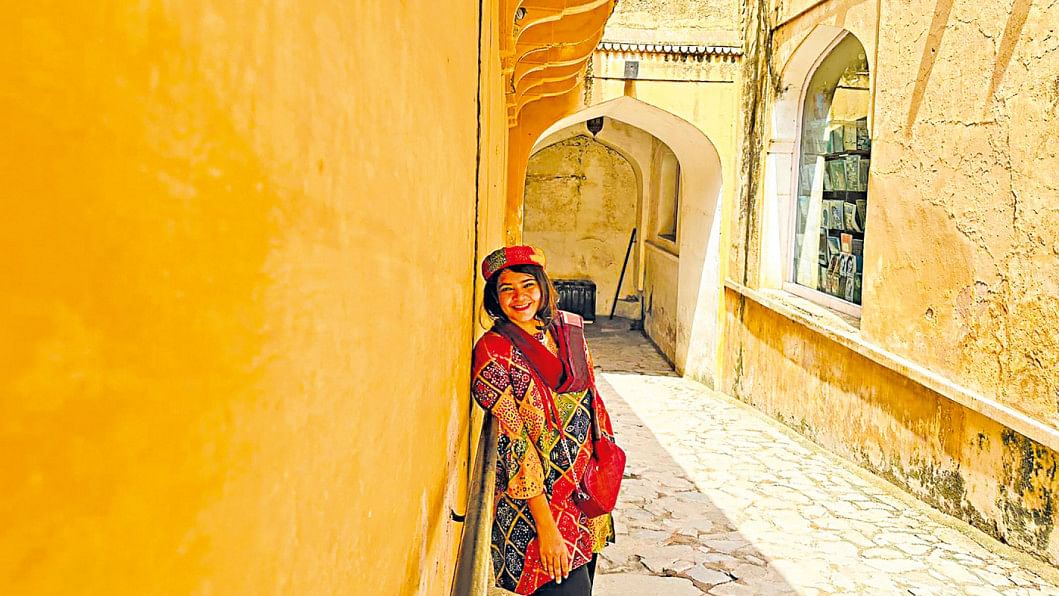
We spent nearly three hours at Amber Fort, but it wasn't enough to fully appreciate its history and architectural brilliance. After refreshing ourselves with cold nimbu pani (lemonade), we headed to a nearby spot, Hathi Gaon (the elephant village), located at the foot of Amber Fort. The village serves as a home for the elephants and their caretakers who once offered rides to tourists at the fort, though this practice is now banned. We clicked a few photos with these gentle giants before moving on to our next destination: Jantar Mantar.
It is one of the largest astronomical observatories in the world. Built by Maharaja Sawai Jai Singh II in the early 18th century, it is a testament to Rajasthan's historical expertise in science and architecture. The site features the Vrihat Smarat Yantra, the world's tallest sundial, which towers 27 meters high. Walking through Jantar Mantar, marvelling at the precision of the instruments, gave us a deep sense of how advanced this place was at that time.
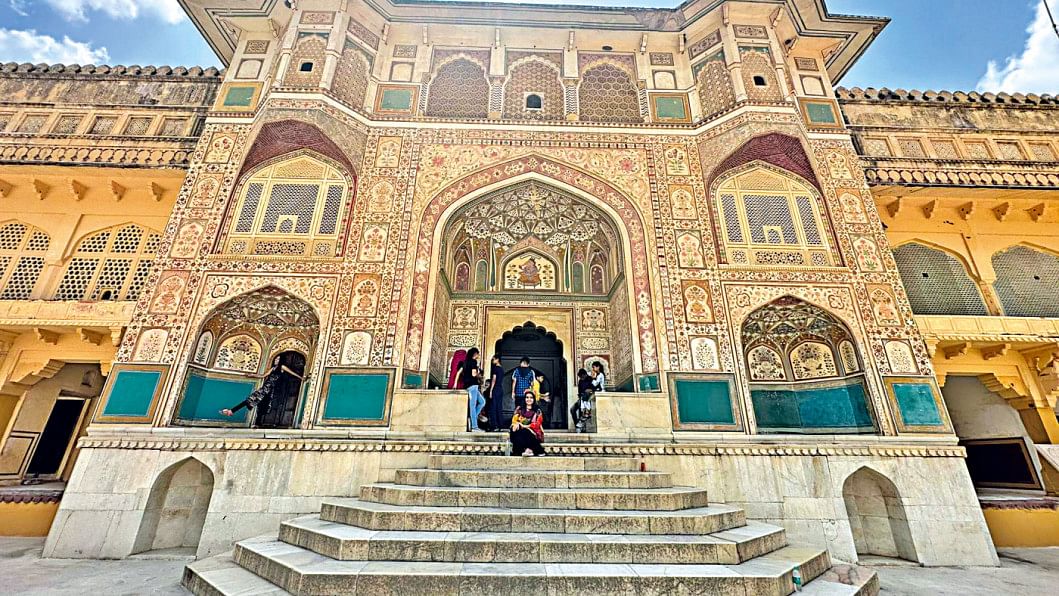
Our last visit was to the City Palace, a stunning blend of Mughal and Rajput architecture that still serves as the residence of Jaipur's royal family. Built by Maharaja Sawai Jai Singh II, the palace complex includes courtyards, gardens, and buildings, each more beautiful than the last. The craftsmanship is especially striking, from the ornate doorways to the frescoed arches of the pavilions. After visiting the palace museum and picking up a few souvenirs, we decided to rest for a bit before making our way back to Delhi.
Before heading to the hotel, we made a quick stop at Bapu Bazar, a bustling market famous for its traditional Rajasthani attire. The market was a riot of colours, with dresses, clothes, and turbans printed with images of kings, queens, and elephants. We bought some souvenirs, taking in the vibrant atmosphere of the place. Exhausted but happy, we returned to the hotel for a brief rest before our return journey.
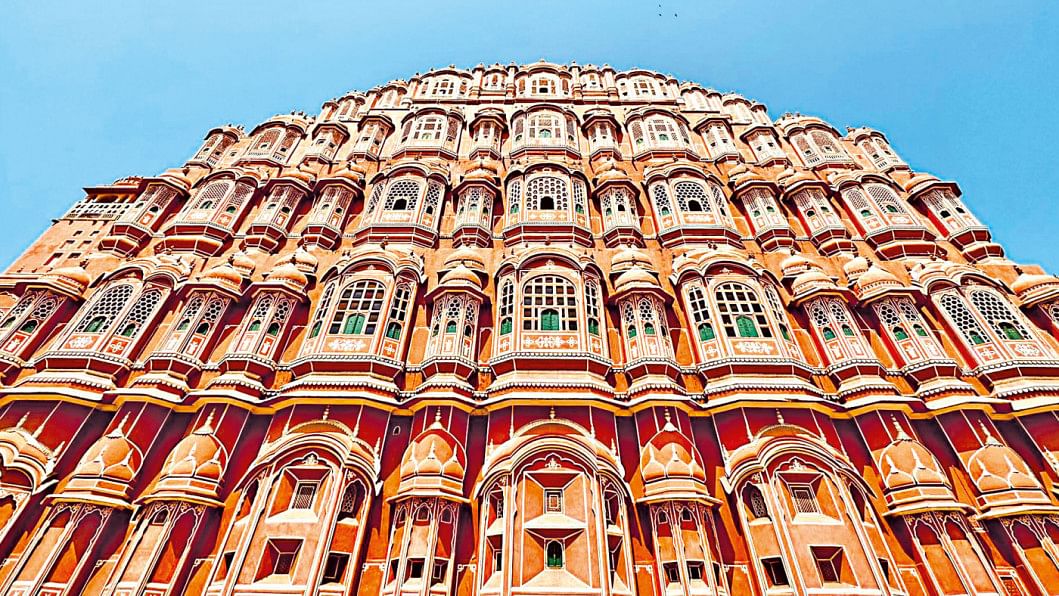
As we drove out of the city, I couldn't help but feel that a single day in Jaipur had barely scratched the surface of this captivating city. Its hospitality, architectural grandeur, and cultural richness left an indelible mark on me. There was so much more to see, to experience, to understand—enough to call for a second visit. But one thing was clear: Rajasthan's warmth and beauty had captured my heart, and I would return.
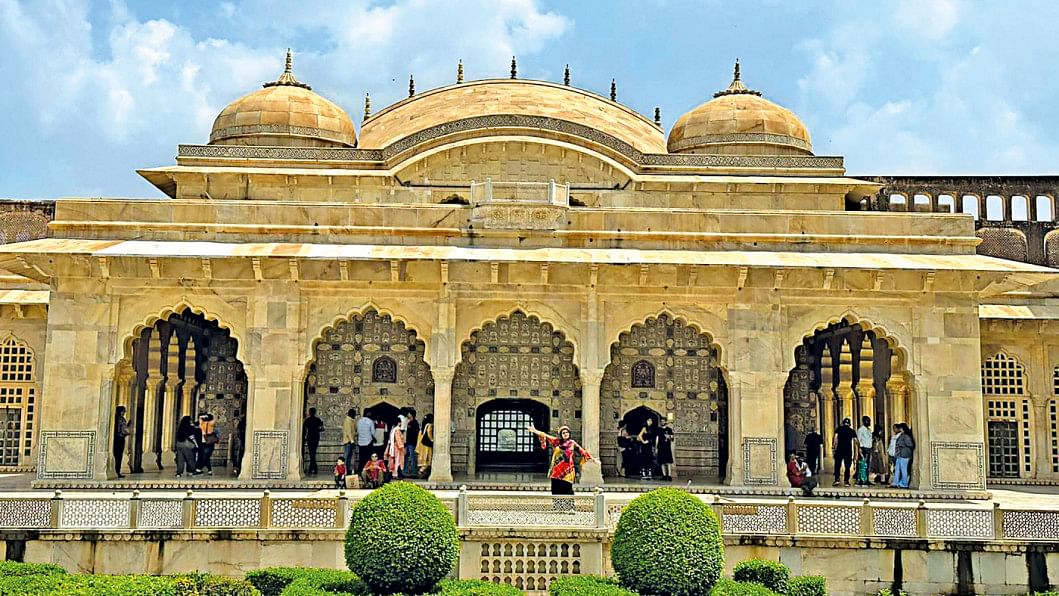
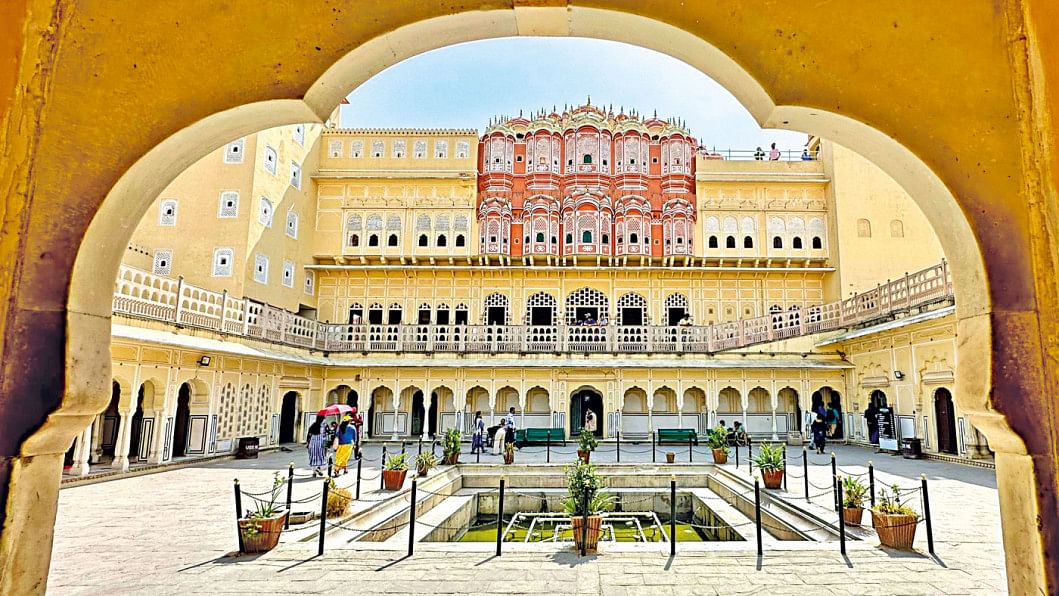
Tips for Travellers
Be prepared for a lot of walking, so wear comfortable shoes.
Visit between September and March for pleasant weather.
Allow at least two to three days to fully explore Jaipur's sights.
Renting a day-long taxi is a convenient way to visit all the main tourist spots.

 For all latest news, follow The Daily Star's Google News channel.
For all latest news, follow The Daily Star's Google News channel. 



Comments